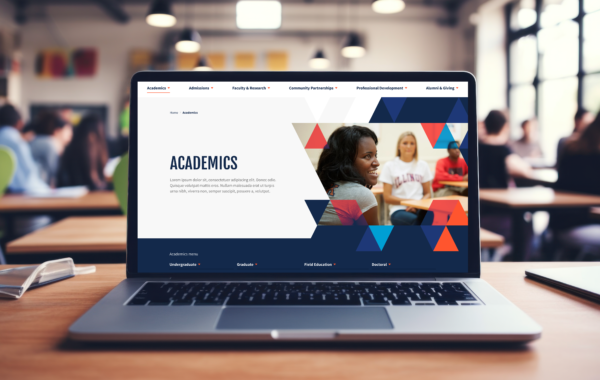Top 5 things to know before your higher ed website redesign

Introduction
At Pixo, we’re experienced at embarking on complex website redesigns for higher ed clients, and we’ve learned that the more we can collaborate with those clients, the more successful the project will be. Sometimes folks are surprised at the thoughtfulness we ask of them. After all, aren’t we just building a website here? But your higher ed website is a potent tool to connect meaningfully with your audiences. The more you understand the elements involved, the better positioned you are to leverage its opportunities, both now and in the future.
Here’s a quick guide of things to think about as your higher ed website redesign is starting:
- Goals
- Audiences
- Content needs
- Stakeholders
- Brand standards
1. Goals
Start by assessing your institution’s goals, whether they come from documents like strategic plans or observations from people like your recruitment staff. Where could you be improving? Are your application numbers where you want them to be? What about the website—do prospective students call to ask about information that’s hard to find? Do content authors have trouble updating content that therefore falls out of date? Being able to share these types of pain points with your website team will significantly increase your chances for a focused project.
2. Audiences
Remember, your website isn’t for you; it’s for your site visitors. Brainstorm a broad list of these groups, considering how much they rely on the website for information (i.e. reading and learning) and taking action to connect with you (like applying, scheduling a visit, or donating). Also consider how important each group is in helping your institution achieve your strategic goals. Coming in with a base understanding of who your website audiences are will help us guide you in prioritizing content and design needs.
3. Content needs
Content is the core of your website. Everything else—design, architecture, workflows—exist to hold the content together and make it accessible. Taking stock of how much content you have, along with its relative quality, can give you a major advantage at the top of a website project. Evaluate what’s currently effective, what’s lacking, and where users face confusion. While you’re at it, make a list of content authors and editors. Who updates the site? Who requests those updates? How often do those updates happen, and how easy or difficult are they to make?
4. Stakeholders
Not recognizing your stakeholders from the start of a project can lead to delays that cost both money and time. Consider stakeholders at all levels, from presidents or deans with high-level knowledge to the folks who update your site and will want to give feedback. Clarify who needs project updates and how frequently they need to be involved.
5. Brand standards
You’re probably familiar with your existing visual brand requirements, like colors, fonts, and logos. Have those ready to share with your project team, along with specific guidelines for imagery and media assets and links to any existing editorial style guides. Understanding these constraints up front saves time during the design process.
Embarking on a higher education website project doesn’t have to be overwhelming. With even just a quick review of these elements, you’ll come to the project table with more confidence, ensuring a more fruitful partnership and a website that truly serves your goals and your audiences’ needs.
Need a partner for your higher ed site redesign?
If a higher ed website redesign is on your horizon, we’d love to help — get in touch.
For more on higher ed, check out: